As a result of the first attack and the growing threat to Andersen, the decision was made to reinforce the base with C Company, 3 RAR flown in by the time of the second attack two nights later. The APCs had also been redeployed to cover the south-east ridge and the southern approach from Trang Bom. The second NVA/VC assault commenced just before midnight on 19 February, this time focusing on the south-east, and was preceded by heavy machine-gun fire. The attack was stopped short of the wire, regardless the forward pits were hit by rifle grenades, while the Assault Pioneer positions were attacked with satchel charges. The only casualties were four Viet Cong killed.
Chuck Bonzas also remembers the ‘Turkey Shoot’ one night probably after the second assault. Everybody at the base was edgy and, when the Americans opened up at something they thought they saw beyond the wire, all units on the whole perimeter joined in. The number of rounds expended was massive.
The third and final attack on 28 February also began with a mortar attack, but the communist assault wave was broken up by mortar fire, and was forced to withdraw to the east. Three Americans were wounded. A clearing patrol later revealed that the Viet Cong had inserted a mortar team to the edge of the rubber trees by night in a Lambretta scooter and a cart and had then manhandled the tubes into position.
3 RAR’s defence of FSB Andersen was the first occasion in the history of operations in Vietnam that an Australian fire support base had been subjected to a ground assault, while during all three attacks the cavalry and artillery in support had played a key role in the defence. Throughout the later part of the operation the patrolling rifle companies had systematically searched the AO and although contact was infrequent the patrols had been effective in denying the subsequent use of the area to launch rocket attacks.
Peter Macdonald: After the month at Andersen, we were all exhausted. Our Troop Commander Captain Viv Morgan was an exceptional leader and, more than anyone, appreciated what we had experienced at Andersen. His philosophy was simple, keep us busy to stop us languishing around and stop us re-living our experiences, which would have a detrimental effect on future operations. “so what could we do to keep their minds occupied for a week until the next Op ….Let’s re-build Trang Bom!” …. And we did.
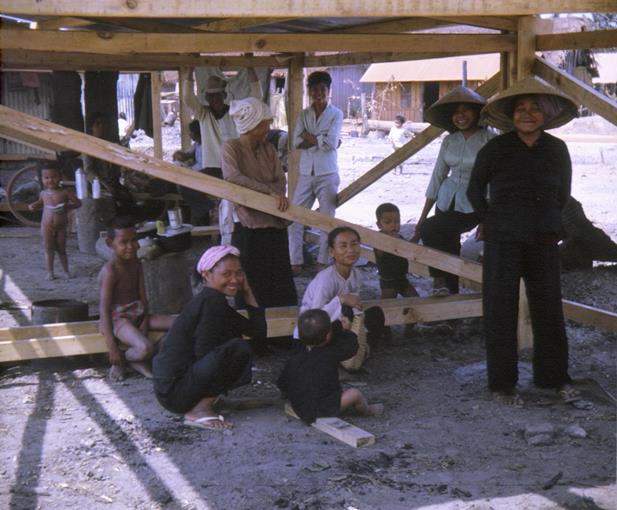
Conclusion of Operation Coburg
Operation Coburg ended on 1 March 1968 with 3 RAR redeploying to Nui Dat by air, while the Kiwi Artillery and the 3 Troop Sappers trekked back on top of the 3 Cav Armoured Personnel Carriers. The fighting had cost the Australians 17 killed and 61 wounded, while allied casualties included two New Zealanders and one American killed, and eight New Zealanders and six Americans wounded. Communist casualties included at least 145 killed, 110 wounded and 5 captured, with many more removed from the battlefield. Large quantities of weapons and equipment were also captured by the Australians. Overall, Coburg was considered a success by both the Australian and American Commands. Although they had been inserted too late to prevent the attacks during Tet, 1 ATF had disrupted enemy lines of communication, limiting their freedom of maneuver to attack the Long Binh–Bien Hoa complex, while the Australians had also successfully interdicted the Viet Cong withdrawal, causing heavy casualties.
In reality, the NVA and VC forces were not finished by a long chalk: Next up they would meet the 1ATF forces again on Operation Pinaroo, then launch more FSB assaults during the battle of Coral-Balmoral 12th May – 6th June 1968.
Former 3RAR CO Brigadier Jim Shelton (Retired) in 2016: 3RAR had a very high regard for the Engineer support during our tour of duty in Vietnam and in particular at Andersen and in the enemy Secret Zone in the Long Hai hills; when I attended Viv Morgan’s funeral my thoughts were about FSB Andersen.
Major General Hori Howard (Retired) in 2016: I have never forgotten the sad incident with the Engineer Section, but it could have been any of us …. I had the privilege of working with Cpl Merv Dodd and his excellent section on several occasions during 1968, and with Capt Viv Morgan and Sgt ‘Jonah’ Jones of 3 Troop in the Long Hais. I have always had great respect for our Engineer comrades, no matter what role they were performing.
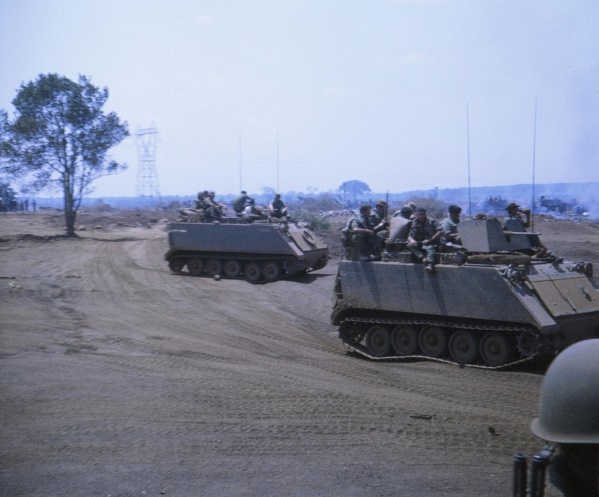
Conclusion – From a Sapper perspective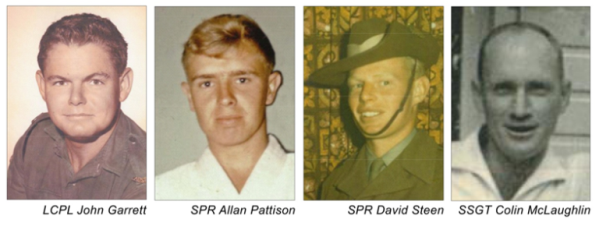
The Battle of Fire Support Base Andersen has left a lifetime legacy for all those involved, soldiers from all of the Combat Arms of the Australian, New Zealand and American Armies: Infantry, Artillery, Engineers and Armour. Those who died during the fighting lost their young lives full of promise, and left behind wives, children, girlfriends, mothers, fathers, brothers, sisters and friends, all of whom had to cope with the tragic loss of their beloved soldiers.
For most, the effects of that loss go on to this day. It is the families of the fallen that have borne the greatest cost of Australia’s involvement in the Vietnam War.
For the comrades of those who died, the loss and the cost has been no less, for they still see the faces and hear the voices of their lost mates. For the 3 Troop Sappers, the standing patrol tragedy and attacks on Andersen forged a bond that is unbreakable. There is a remarkable video about the reunions of 3 Troop Veterans on YouTube at https://www.youtube.com/watch?v=8fx8-QiNmbA
Unanswered questions: For those Army Engineer veterans who were there in 1968, there are still unanswered questions about the Battle of Fire Support Base Andersen, primarily as to why the battle has received little or no coverage in books or journals compiled by military historians since the Vietnam War?
It seems that military leaders were reluctant to speak about it, and there was a lack of information from early in the piece – even when a lost page of the FSB command Duty Officer’s log was located for us by the AWM’s Head of Military History Ashley Ekins late in 2016, there is a bewildering gap in entries between 0100hrs when the action began, and 0525hrs when clearing and cleaning up procedures commenced*.
(*compared say to the 1RAR Commander’s Diary for the key night of the Battle of Fire Support Base Coral several months later on 13 May 1968, which has 19 highly detailed entries between 0010h when the attack started and 0630 when it subsided)
This ‘no coverage’ question is compounded by the fact that the Battle would seem important from a military and strategic point of view, as it was the first time that an Australian Fire Support Base had come under direct assault from the NVA and VC forces and it was outside of the area of operations allocated to 1ATF in Phouc Tuy Province based on Nui Dat.
Second, why were standing patrols continuing to be sent to the same well used (and well known to the enemy) location outside of the wire of a major Fire Support Base in the known path of a significant enemy force? And why decide to send a section of Combat Engineers to carry out the specialist Infantry task of providing critical intelligence for the defence of that base? Reconnaissance tasks such as this are overwhelmingly carried out by specialist Infantry soldiers highly trained to respond to contacts with the enemy, and sometimes involve the Special Air Service (SAS).
The answer perhaps lies in the third question, perhaps the key question for the sapper veterans of Andersen: Why was the Base so undermanned when it had been deliberately established by 1ATF astride predicted lines of movement for the communist forces? As pointed out by Ian McGibbon, an extra Infantry Company was brought in immediately after the first attack.
These questions aside, It is hoped that this article may in some way allow the Battle of Fire Support Base Andersen to be better known in the Australian Community, the Australian Army and within our Corps, and will result in the service and sacrifice of all of those who fell becoming well recognised.
We also have to acknowledge the brave North Vietnamese Army and Viet Cong soldiers who fought at Andersen and understand that their pain and loss of comrades has been and is no less than ours. Those of us who have returned to Vietnam in recent times and have engaged in conversation with our former enemy, have found their commemoration and remembrance of their lost comrades quite moving and remarkable.
The Question of Battle Honours and Recognition: Subsequent to Operation Coburg, The Royal Australian Regiment and the 3rd Cavalry Regiment were awarded the battle honour “Bien Hoa”, one of only five presented to Australian units during the war.
Even though the (virtually entire) Engineer Squadron was under the 1ATF deployment for the whole of Operation Coburg, even though the sapper combat teams and mini teams accompanied infantry and armour’s every move, even though sappers were on the perimeter of Andersen throughout all the enemy assaults, and even though the standing patrol was decimated while acting as infantry at the listening post, under the antiquated Imperial Honours system, no formal recognition was extended to the 1st Field Squadron RAE.
This exclusion of Combat Engineer elements on Operation Coburg was, and remains, a travesty of fairness and equity for the Squadron and the sappers who participated, most particularly those members who were killed and wounded in action.
Further, none of the ten sapper casualties were considered eligible for the award of the Infantry Combat badge, even though they fulfilled all of the criteria for that award when it was established in 1970.
It was therefore very pleasing for the members of the Vietnam Tunnel Rats Association to have the (belated) posthumous award of the no lesser Army Combat Badge made available for our fallen brothers from FSB Andersen, and elsewhere, even though three decades late.
Closing Note. Murray Walker MID has contacted the Vietnam Tunnel Rats Association asking that elements of the story which mentioned Jack Lawson also made the hazardous journey back to FSB Andersen with him be corrected. This matter has been a disputed issue for many years and neither myself nor the Holdfast Newsletter has the knowledge nor the right to sit in judgment on the issue; Our role has been solely to compile information submitted by a wide array of sources nearly 50 years after the event. This note is included out of respect for Murray Walker.
Postscript: In November 2016, Vietnam Tunnel Rats Association President Jim Marett was able to secure approval from the Government of Vietnam for a Tunnel Rats tour group to visit Trang Bom and the knoll site of the decimated standing patrol, and to conduct a memorial service there. We thank the Vietnamese people for this great privilege.
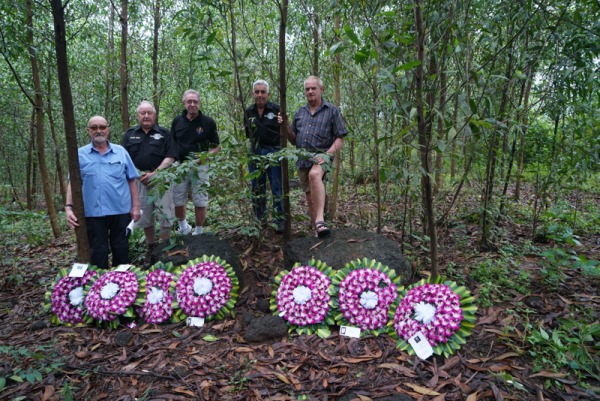
HONOUR ROLL – FIRE SUPPORT BASE ANDERSEN, SOUTH VIETNAM, 1968
“To Honour These Men and Remember Them”

Outside the Wire: The Standing Patrol, 11 Section, 3 Troop, 1st Field Squadron, Royal Australian Engineers.
Staff Sergeant CW McLaughlin KIA 18th February 1968
Lance Corporal JE Garrett KIA 18th February 1968
Sapper AG Pattison KIA 18th February 1968
Sapper DJ Steen KIA 18th February 1968
Sapper GJ Coombs KIA 22nd March 1968 (on Operation Pinaroo)
Sapper VJ Tobin KIA 22nd March 1968 (on Operation Pinaroo)
Inside the Wire:
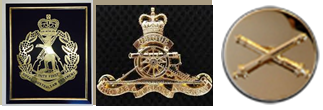
Private TJ De Vries Van Leeuwen 3rd Battalion, The Royal Australian Regiment KIA 18th February 1968
Private JA Doherty 3rd Battalion, The Royal Australian Regiment KIA 18th February 1968
Lance Bombardier JL Menz Detachment, 131 Divisional Locating Battery, Royal Regiment of Australian Artillery KIA 18th February 1968
Specialist 4 Orville W ‘Buddy’ Heightland Jr. B Battery, 2nd Battalion, 35th Field Artillery, US Army KIA 18th February 1968
POSTSCRIPT NOTES
1.Regarding the American Soldier ‘Buddy’ Heightland. The following note of June 19, 2009 is reproduced from the following US Army Veterans Website https://army.togetherweserved.com/army/servlet/tws.webapp.WebApp?cmd=ShadowBoxProfile&type=Person&ID=5235
by Alan Ward, Comrade, 709 NW 138th Edmond OK 73013 USA
Valor Under Fire
I was there the night that Spc. Heightland was killed. Of all the medals that were awarded for the action that took place that night only Spc. Heightland was deserving. He gave his life turning on the rescue helicopter landing lights so that wounded comrades could be evacuated to safety. His action was taken without hesitation and without thought to his own safety. While many of the men who were awarded medals of bravery sat in heavily fortified bunkers,
Spc. Heightland exposed himself to the brunt of the attacking forces to save others. There can be no award given by man high enough to reflect Spc. Heightland’s actions.
2. Enemy Written History about the Battle at FSB Andersen. The following comments have been provided by Vietnam Veteran, Historian and Linguist Ernie Chamberlain, who is well known for his translation of enemy documents/written history.
As you know, the company-sized ground attack on FSPB Andersen in the very early hours of 18 February 1968 was believed to have been by elements of the VC’s 274th Main Force Regiment – but with “VC casualties unknown” (according to the After Action Report on OP Coburg, AWM95, 1/4/86). C14 Company of the 274th Regiment was identified in captured documents.
It appears that the fighting in the FSPB Andersen area is mentioned in both the 5th VC Division History (2005) and in the 274th Regiment History (2014) ie:
“Following the General Offensive and Uprising of Tết Mậu Thân , the 4th ((ie 274th)) Regiment withdrew to the area north of Trảng Bom and coordinated with the the armed forces of Biên Hòa Province to continuously attack the posts of the enemy in Trảng Bom and the Long Bình (Biên Hòa) area. On the night of 18 February, the 4th ((ie 274th)) Regiment deployed its 3rd Battalion and two companies of its 1st Battalion to assault a mechanized infantry outpost of the Americans two kilometres north of Trảng Bom. After two hours of fighting, we drove 100 enemy from the battlefield and set fire to 70 military vehicles. Also that same night, the 2nd Company of the 1st Battalion joined with the RCL Company of the 724th Regiment to shell the Long Bình logistics complex, resulting in explosions in two warehouse areas and wiping out a company of the enemy.” All quite “hyperbolic” – as usual.
References:
Personal Communications: Former Sappers: John Benningfield, Graham Burgess, Norman Cairns, Robert Creek, Barry Gilbert, Brian Hopkins, Jack Lawson, Peter MacDonald, Victor Underwood, Murray Walker.
Former Commanders: Australia – Colonel (Retd) John Kemp AM, Brigadier (Rtd) JJ ‘Jim’ Shelton DSO MC , Major General (Retd) Brian ‘Hori’ Howard AO MC ESM , LT (Rtd) Harry Clarsen AM. New Zealand – Colonel (Rtd) Mike Harvey RNZ Artillery (Retd)
Former 3RAR Infantrymen: WO1 (Rtd) Bob Dabinett OAM, Barry Swain.
Books
English, Michael C. Brave Lads: 3RAR in South Vietnam 1967-1968, Australian Military History Publications, 2008
McNeill, Ian and Ekins, Ashley On the Offensive The Australian Army in the Vietnam War 1967-1968 Allen & Unwin Crows Nest NSW 2003
Florence, Brian History of 1 Field Squadron Group Royal Australian Engineers South Vietnam: 1965-1972 The Corps Committee of the Royal Australian Engineers, Moorebank NSW 2013
Ham, Paul Vietnam: The Australian War Harper Collins, Pymble NSW 2010
McGibbon, Ian New Zealand’s Vietnam War: A history of combat, commitment and controversy Exisle Publishing Ltd, Auckland 2010
Articles
Coulthard-Clark, Chris Tet Turning Point, Wartime Issue 20, Australian War Memorial, Canberra 2002
Perry, Major Peter RAE (Retd) Fire Support Base Andersen –Operation Coburg 29th January – 1st March 1968 The First Fight of the Trilogy The Untold Story 2016 Self Published
This material was compiled and written by former sapper Peter Scott* for the Vietnam Tunnel Rats Association Inc. as background for the article published in the Association’s Holdfast Newsletter No. 30 http://tunnelrats.com.au/pdfs/newsletters/Holdfast-30.pdf
*served with 2 Troop 1 Field Squadron RAE 1969/70 attached on Operations to 5RAR, 7RAR, 1 Armoured Regiment RAAC and 3 Cavalry Regiment RAAC. Email contact for Peter Scott holdfast279@yahoo.com.au
The full version of the article is online at https://firesupportbaseandersentet1968.wordpress.com/
Compiled and Written by Peter Scott
Click here to read Part 1
Click here to read Part 2
Contact MHHV Friend about this article.






